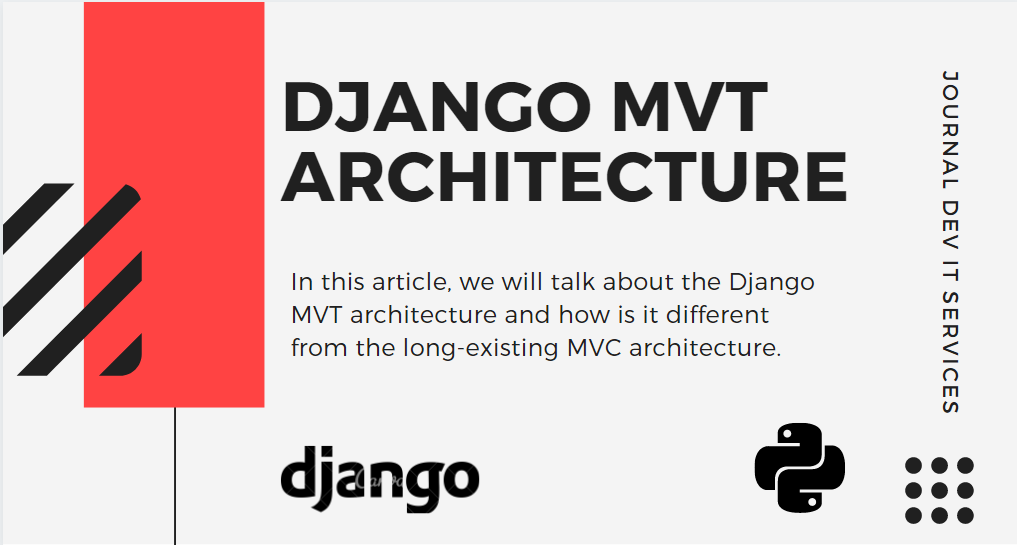In this article, we will talk about the Django MVT architecture and how it differs from the long-existing MVC architecture. So let’s get right into the topic and understand the MVT architecture.
Django’s Model-View-Template (MVT) is a fresh take on the classic Model-View-Controller (MVC) design pattern. While the Model’s function remains consistent, Django’s View encompasses the Controller’sd role, linking the Model data with the Templates. The Templates, similar to Views in MVC, form the user interface. Control flows from URL requests to Views, then onto Models for data retrieval, finally rendering Templates with the fetched data
But before that, we’ll briefly go over the MVC Architecture here.
What is MVC Architecture?
MVC architecture has been there for a long time in the software industry. Almost all languages employ MVC with slight variation, but the concept remains the same.
MVC stands for Model – Views – Controller
- Model – A model serves as an interface for data stored in the database. It is responsible for maintaining the data and handling the logical data structure for the entire web application.
- Views – A view in MVC is a user interface. It is responsible for displaying Model Data to the user and also to take up information from the user. Views in MVC is not the same as the Views in Django. We will learn the difference later in this article.
- Controller – A controller in MVC is responsible for the entire logic behind the web application. This means when a user interacts with a view, raising an HTTP request, the controller sees the user request and sends back the appropriate response.

Django prefers to use its own logic implementation in its web app and hence its framework handles all the controller parts by itself.
Hence Django implements a different kind of architecture called MVT (Model – View – Template) architecture.
What is the Django MVT architecture?
MVT architecture is the software design pattern used by the Django web framework.
MVT stands for Model – View – Template.
1. Model
The Model in MVT, much like in MVC, provides the interface for data stored in the database
2. Views
Views in Django serve as the bridge between the Model data and Templates.
Note: Just like the controller in MVC, views in MVT are responsible for handling all the business logic behind the web app. It acts as a bridge between Models and Templates
It sees the user request, retrieves appropriate data from the database, then renders back the template along with retrieved data.
3. Template
Just like View in MVC, Django uses templates in its framework. Templates are responsible for the entire User Interface completely. It handles the static components of the webpage, including the HTML that users encounter.
Therefore there is no separate controller in MVT architecture and everything is based on Model -View – Template itself and hence the name MVT.
Control Flow of MVT

Here as shown in the above picture
- The user sends a URL request for a resource to Django.
- Django framework then searches for the URL resource.
- If the URL path links up to a View, then that particular View is called.
- The View interacts with the Model, retrieving the relevant data from the database
- The View then renders back an appropriate template along with the retrieved data to the user.
Conclusion
So what’s next? Well, now that you’ve got a solid handle on Django’s MVT, it’s over to you. Think about how you can use these concepts in your future web projects. Could MVT be the key to making your websites even better? How will this knowledge change your approach to building web apps?
For deeper insights into each component, refer to our dedicated articles on Django Models, Views, and Templates articles.
